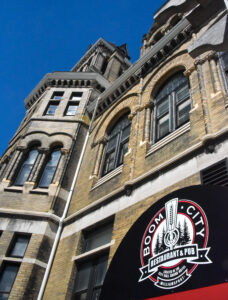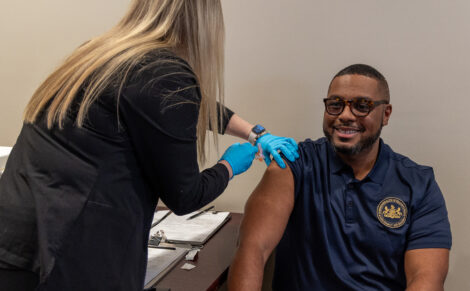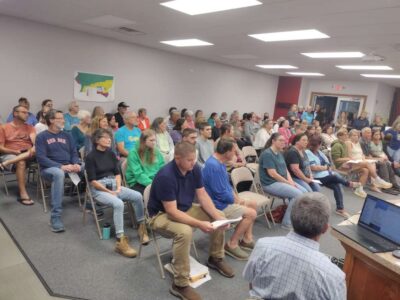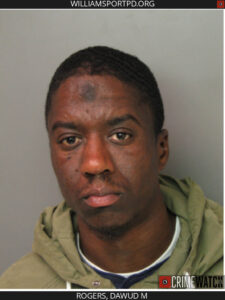Testimony wraps up in case against accused 2016 gunman
The trial for a city man accused of gunning down an alleged victim on Dec. 30, 2016 continued Tuesday with much of the testimony focused on establishing the motive for the shooting.
An EMS worker at the hospital the night that Rogers was allegedly attacked testified that both he and Rogers visited the emergency room in quick succession.
Rogers presented with head and face injuries, including an abrasion to his right eye and a subconjunctival hemorrhage to his left eye.
Rogers stated that he was walking to the store when multiple people approached him. The next memory he had was waking up bleeding,” the EMS worker testified.
Shortly after Rogers’ arrival, the alleged victim entered the hospital for treatment of an injury to his left hand.
X-rays would confirm that he was suffering from a “boxer’s fracture,” the medical worker said, with the alleged victim relating that he was shadow boxing when he accidentally struck the wall.
Interviewed while at the hospital, Rogers stated that he was struck in the back of the head by an unknown person with an unknown object and lost consciousness, awaking later to find that the attacker had taken two iPhone 7’s, $275 in cash and several keys including one to a Hyundai and another to his residence, city police officer Robert Brown testified.
Former city police Chief Damon Hagan, also present at the hospital the night of the attack, noted the presence of the alleged victim in the hospital at the same time as Rogers, in light of the injury to his hand,” he testified. During cross examination, Hagan acknowledged that Rogers never implicated the alleged victim, nor was he interviewed in relation to the incident that night.
A female witness who was dating the alleged victim at the time of the shooting, called by First Assistant District Attorney Martin Wade, testified that he had sent her a text message at 1:36 a.m. on Dec. 23, 2016, relating that he had been involved in some type of incident, though he refused to explain what that incident was by text message. The alleged victim then texted an image of his x-ray, telling her that the injury required surgery. He further stated he hoped the other person involved wouldn’t report the incident to police, she said.
“Dawud is what happened to my hand,” the alleged victim eventually relinquished, relating that the two were playing pool and one of them owed the other one $20, and that he struck Rogers and went through his pockets, the witness testified.
The alleged victim then sent the witness a video depicting an individual laying on the ground of an apparent parking lot with several other individuals gathered around.
The alleged victim stated that he had Rogers’ keys and could call him to get them back, the witness said.
Pushed during cross examination, the female witness acknowledged that the alleged victim had indicated that a previous firebombing of his residence had been carried out by a male witness that testified to being with Rogers on the day of the shooting.
She further admitted that the alleged victim had many enemies.
During testimony by county detective Calvin Irwin, who was responsible for retrieving the video, Hoffa questioned the means through which the video was obtained by police. “You don’t know when you got the phone, who you got the phone from or who had it prior,” he asked, all questions that Irvin answered in the affirmative. Irvin further testified that he had not attempted any type of extraction of the female witness’s phone. Despite initial witness reports that the shooter fled the scene, heading north in a gray Chevrolet Malibu, still photos taken from the previously shown surveillance video were shown in court, during the testimony of former city detective Edward Lucas, establishing that the front of the vehicle in question bare an emblem in consistent with that of a Chevrolet.
State Trooper Brian Siebert, a Cellular Analysis Technician, testified that cell phone data from Rogers’ provider handed over to police showed Rogers’ phone in the vicinity of the crime scene at the time of the shooting.
The data then drew a clear path from that scene along Route 15 South, from Interstate 80 to the Interstate 180 exchange to Interstate 467 South, with tower signals indicating its presence consistent with an area near his mother’s house, the trooper testified.
Under cross examination by defense co-counsel Matthew Deimer, Siebert acknowledged that the information used to track Rogers’ phone was primarily used by cell phone companies in order to better serve their customers, including decisions on whether more towers in a given area would be of benefit.
The data created is not specifically intended for law enforcement, and can provide only an “approximate” estimate or “general geo location” of where a device might be, and not a specific place or address, Siebert testified.
The trial is scheduled to resume today at 9 a.m.





